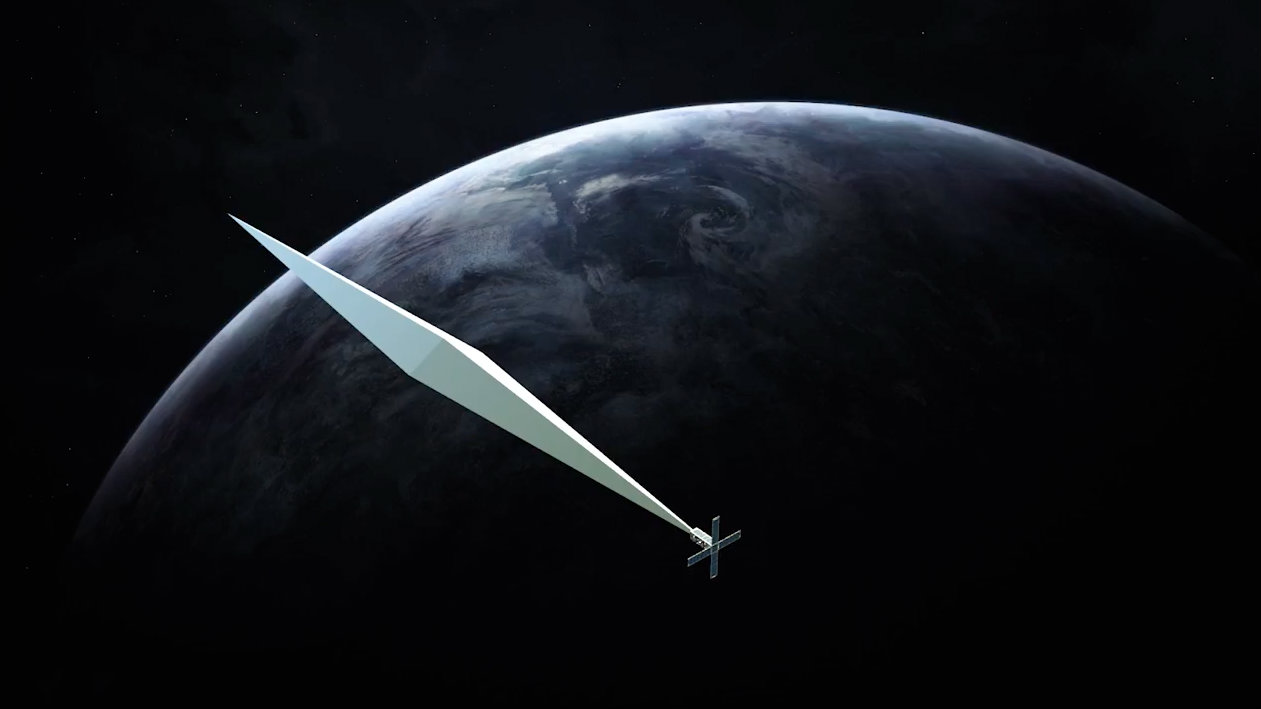Elon Musk is sending art into space
Out of this world

On December 1, science and art are to come together yet again as Elon Musk, the founder of space exploration company SpaceX, prepares to send a sculpture by American artist Trevor Paglen into space.
Named 'Orbital Reflector', the artwork is to be launched on the SpaceX Falcon 9 from the Vandenberg Air Force Base in Santa Barbara county, California.
The fields of art and science have enjoyed a closely intertwined relationship for hundreds, if not thousands, of years, from the detailed skeletal illustrations of Gray's Anatomy to Leonardo Da Vinci's intricate mechanical sketches.
This relationship isn't just down to supremely talented polymaths either; art and science even intersect in the natural world, inspiring Van Gogh to capture the sunflower's uncanny Fibonacci spiral of seeds. It's there too in the way bacteria colonize a petri dish in Jackson Pollock-esque filaments and blooms.
Communal satellite
Although works of art have been sent into space before, this is the first time that a sculpture has been launched with the express aim to be visible to the public without the need for a telescope – becoming a "satellite that belongs to everyone."
Orbital Reflector is a reflective Mylar inflatable, which once launched, promises to shine as brightly as one of the stars in the Big Dipper constellation for around eight weeks before disintegrating into the atmosphere.
The artwork is Paglen's way of "transforming space into a place", bringing the invisible satellites that enable telecommunications, financial and transport infrastructure, and military functions out of obscurity and into the collective consciousness.
Sign up for breaking news, reviews, opinion, top tech deals, and more.
According to the Orbital Reflector website, the sculpture is also designed to "encourage all of us to look up at the night sky with a renewed sense of wonder, to consider our place in the universe, and to reimagine how we live together on this planet."
Although the sculpture will be viewable from Earth, anyone who wants to better understand Trevor Paglen's work can view the artist's videos and photographs of satellites and stars at the National Museum in Cardiff, Wales, as part of the Artes Mundi 8 exhibition, which is running until February 2019.

Olivia was previously TechRadar's Senior Editor - Home Entertainment, covering everything from headphones to TVs. Based in London, she's a popular music graduate who worked in the music industry before finding her calling in journalism. She's previously been interviewed on BBC Radio 5 Live on the subject of multi-room audio, chaired panel discussions on diversity in music festival lineups, and her bylines include T3, Stereoboard, What to Watch, Top Ten Reviews, Creative Bloq, and Croco Magazine. Olivia now has a career in PR.